The terms “Ocean liner” and “Cruise Ship” are often used interchangeably, but actually they are different things.
Although the two share a number of similarities there are also some fundamental differences.
What Is The Difference Between a Cruise Ship and an Ocean Liner?
Ocean liners are designed to complete a journey from A to B – from the UK to America, for example.
Cruise ships are designed for recreation and leisure. They usually complete shorter voyages and often sail along the coast of different countries, stopping at lots of different ports.
Ocean Liners sit lower in the water than cruise ships and are better able to deal with poor weather conditions. They are streamlined and aerodynamic.

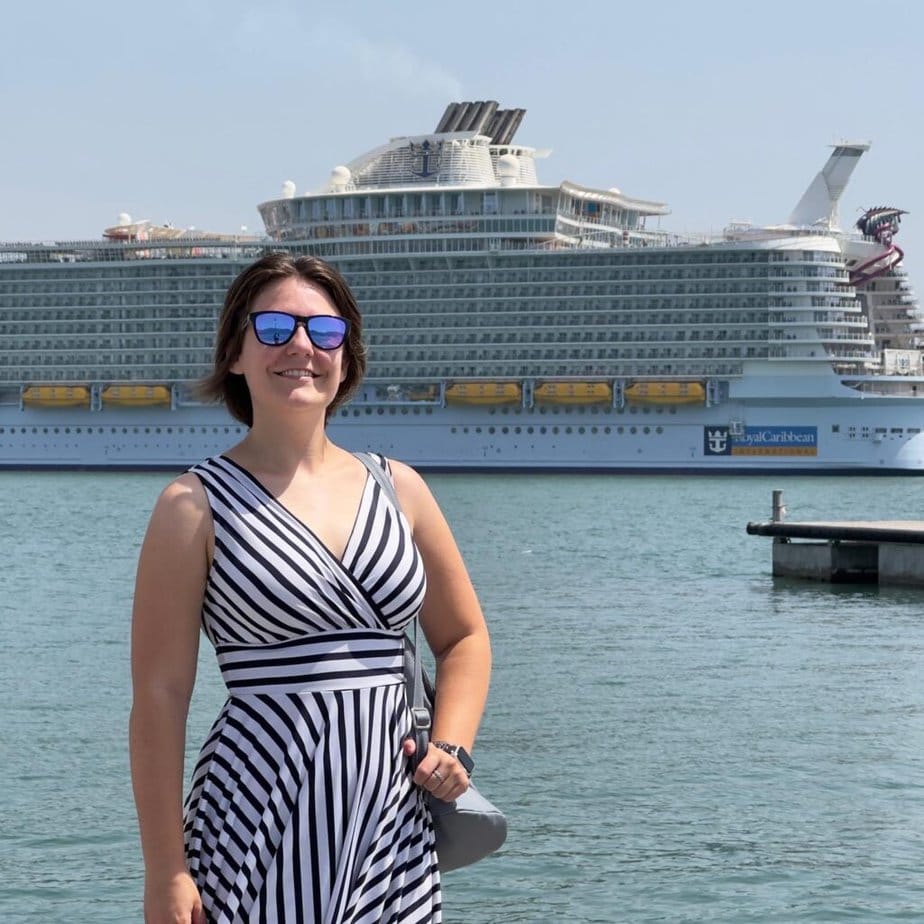
The only Ocean Liner still in service today, is Cunard’s Queen Mary 2.
She regularly sails the route between New York and Southampton and she was specifically designed to deal with weather conditions and storms in the Atlantic during winter.
There are many differences in the design of Ocean Liners and Cruise Ships, due to their different intended purpose.
| Cruise Ship | Ocean Liner | |
| Primary Function | Leisure | Transportation |
| Shape | High on Water | Lower in Water, Pointed Bow |
| Hull Thickness | Standard | Extra Thick |
| Speed | Standard | Fast |
| Onboard Experience | Varied | Traditional/Elegant |
Differences in Ship Design – Shape
Ocean liners tend to sit quite low in the water and have a pointed bow.
They are designed this way to be able to deal with bad weather and to minimize the feeling of movement onboard.
Cruise ships often sit high on the water. Multiple balconies line the sides of the ship, giving some an almost “top-heavy” appearance.
Modern Cruise ships often have many cabins with balconies along the sides. Cruise lines understandably want to maximise their profits by having as many of the more expensive balcony cabins as possible.
This can give large cruise ships a more square, top-heavy appearance, compared to the sleek lines of an Ocean Liner.

Cruise ships aren’t designed to deal with particularly bad weather, although modern ships do have powerful stabilizers they can use in rough seas.
Ship stabilizers are fins or rotors mounted beneath the waterline. They can be put out if needed to help reduce a ship’s roll due to wind or waves.
This does have an effect on the ship’s fuel consumption and speed but makes a real difference to the comfort of the journey in rough weather.
Most cruise ships will try to avoid stormy weather and may slow down or change their route to do so.
Ocean Liners are less likely to have to avoid storms, as they are far more able to deal with rough weather.
If you are worried about getting motion sick when cruising, make sure you check out this post where I share my tips for how I prevent and treat, seasickness:
13 Cruise Seasickness Tips (From Somebody Who Gets Seasick!)
Differences in Ship Design – Materials
Ocean Liners generally have a stronger hull than Cruise Ships.
Queen Mary 2 features steel hull plating. It is described as: “Extra thick for rigidity during Atlantic crossings.”
Queen Mary’s hull is around twice as thick as that found on most Cruise Ships.
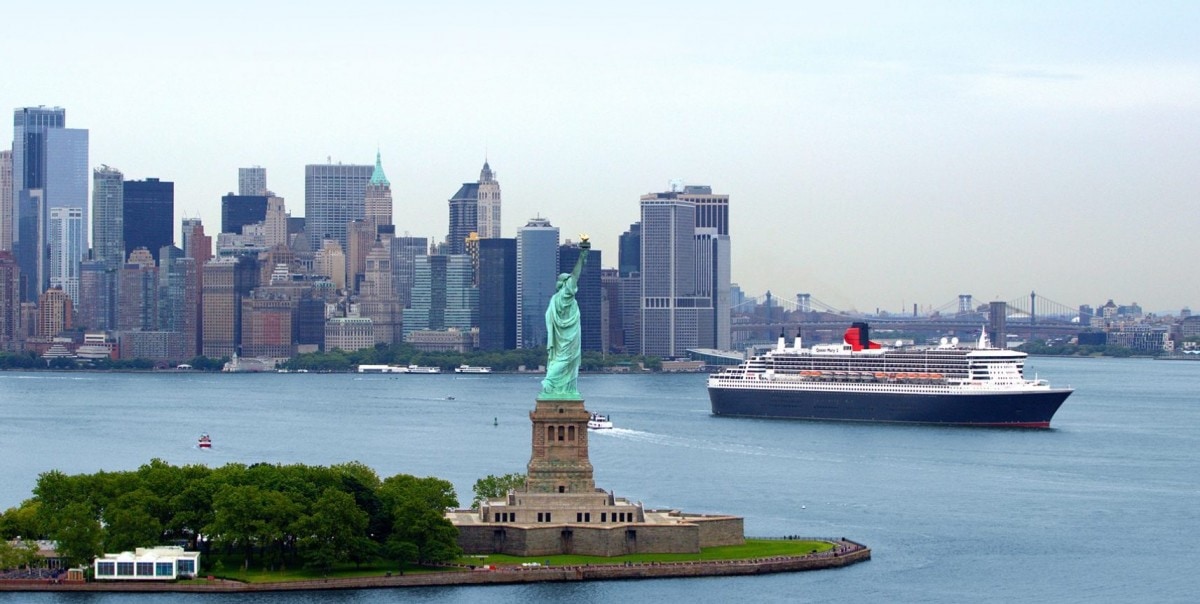
Queen Mary 2’s steel hull is made up of of 94 blocks (580 panels), the weight of some reaches 600+ tons.
Modern cruise ship hulls are still primarily made of steel but they’re usually not as thick or strong as that of Ocean Liners. They simply don’t need to be.
Differences in Ship Speed
Generally speaking, Ocean Liners are designed to be able to go faster than cruise ships.
The fastest Ocean Liner ever built was the SS United States. She could sail at 39 knots (45MPH). That is incredibly fast for a ship!
Sadly the SS United States has been docked in Philidelphia since 1996 and is no longer in service.
She is still structurally sound, and a Conservancy has been founded to save this great American Flagship from destruction.
In recent years cruise ships have been catching up with the speed of Ocean Liners.
When I sailed from Southampton to Hamburg on Queen Mary 2, she was travelling at about 23 knots. This is very fast compared to the speed of cruise ships I travel on more regularly.
The fastest Ocean Liner currently in service is the Queen Mary 2. She can travel at 30 knots (35 MPH).
Most Royal Caribbean cruise ships in comparison cruise at between 18 and 20 knots. This is about 20 – 23 miles per hour.
The Queen Mary 2 felt so stable. When we sat in the bar, looking out at the sea, it was more like being in a building on land with a sea view, rather than being on the sea itself. We cruised on her during the winter. (February)
I know it isn’t always like that, but the Queen Mary’s design certainly makes her better equipped to deal with rough seas.
Differences in Onboard Experience
What is Cruising on an Ocean Liner Like?
Cruising on a modern ocean liner like the Queen Mary 2 is not too dissimilar from cruising on modern cruise ships.
Cunard is a traditional cruise line that has strictly enforced dress codes and set dining times.
There is a feeling of elegance onboard. More than 5,000 pieces of bespoke artwork fill the walls, with many wonderful images of Cunard and White Star ships from times gone by.
You can even take your Cat or Dog onboard a Transatlantic sailing with Cunard! You certainly couldn’t do that on a cruise ship!
Transatlantic travellers
Cunard Line
Dogs and cats continue to travel in style across the Atlantic on board Queen Mary 2. There are 24 kennels, lots of space to play and a dedicated owner’s lounge.
So as not to cause any homesickness, British dogs find familiarity with a lamppost taken from the Cunard building in Liverpool and dogs from the USA naturally enjoy a New York City fire hydrant!
To find out all about my short cruise on Queen Mary 2 to Hamburg and back, watch this video next:
What is Cruising on a Cruise Ship Like?
Modern cruise ships are built with the onboard experience as being the main factor that affects design.
Most cruise ships will contain:
- Multiple Bars
- Multiple Restaurants
- A Choice of Cabins
- Swimming Pools
- Theatres
- Casinos
- Spas/Gyms
When cruising, the onboard experience is often equally as important as the destinations visited.
I know for me personally, I look at the cruise ship first when thinking about booking. I then look at the destinations that we will be visiting.
To find out about all the entertainment onboard one of Norwegian’s newest ships, Norwegian Prima, watch this video next. There is a Go Kart track on the top, as well as multiple water slides and virtual reality arcade games:
Ocean Liners
Current Ocean Liners
There is currently only one Ocean Liner that is still in service, the Queen Mary 2, owned by Cunard Line.
The Queen Mary 2 regularly completes Transatlantic cruises and sails back and forward between Southampton and New York.
I haven’t taken a Transatlantic cruise yet but when I do – I’d love it to be on Queen Mary 2!
She’s such an elegant ship and she deals very well with the bad weather that you often get in the Atlantic.
This is particularly important to me, as I do suffer from seasickness.
Ocean Liners as Hotels
The original Queen Mary, Queen Elizabeth 2, and SS Rotterdam are all Ocean Liners that are no longer in service but are currently being used as floating hotels.
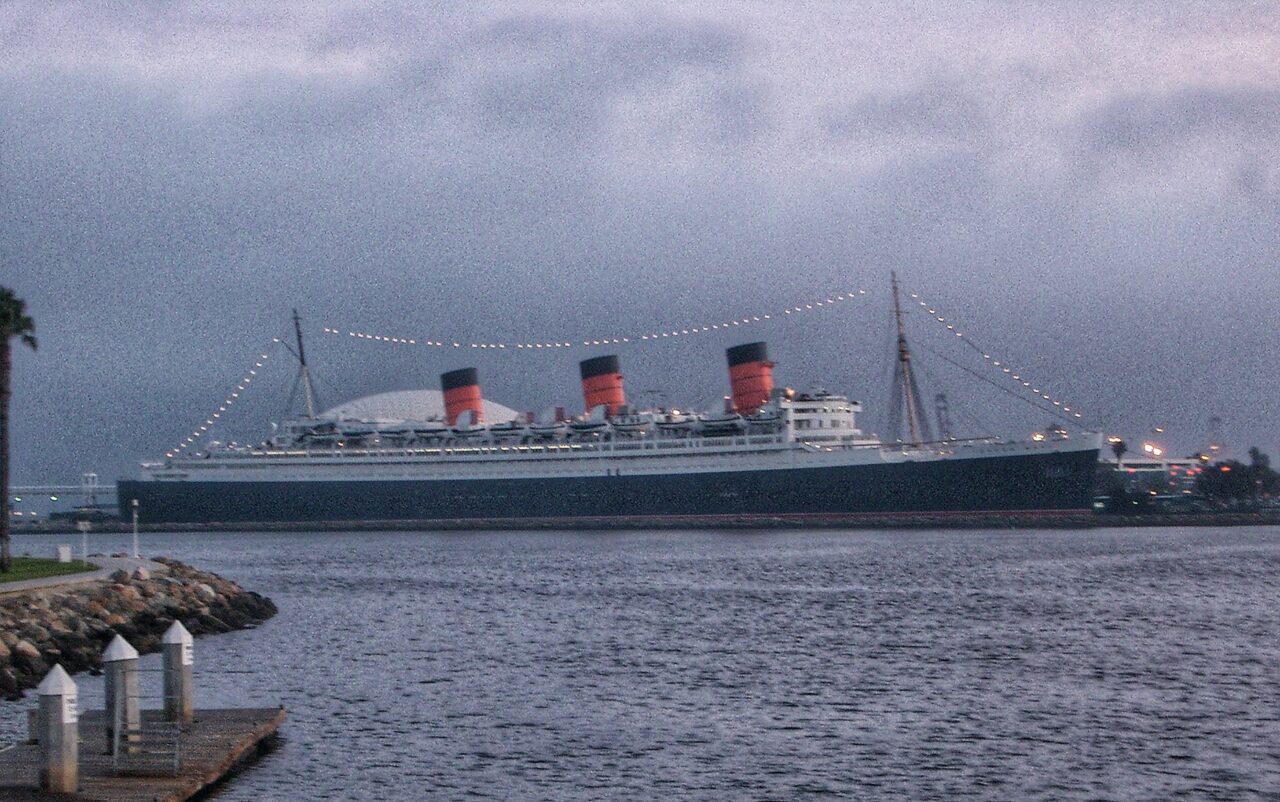
Staying onboard one of these iconic ships is a great way of finding out about life onboard Ocean Liners in times gone by.
I was lucky enough to stay onboard the Queen Mary when I was visiting California.
It was quite an experience, and I really wish that I had my blogging hat on then. Sadly it was about 5 years before I started this blog. It is certainly a ship I would love to stay on and explore more fully another time.
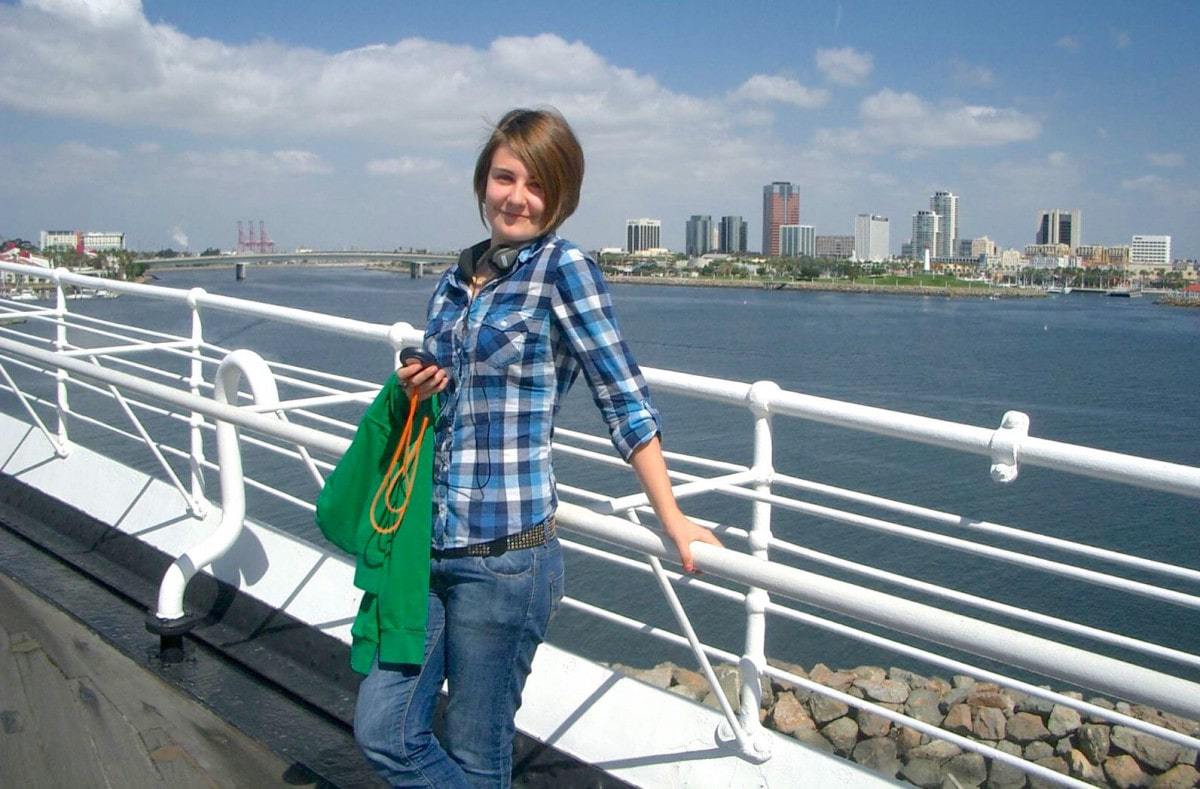
Traditional Ocean Liners
Ocean liners are designed to provide transport from one place to another, similar to how we might use a train or bus to travel.
Ocean Liners could cross great oceans at speed. The journey from the UK to the USA normally takes around seven days.
The Blue Riband was an accolade awarded for the fastest crossing of the Atlantic by a passenger ship.
To be awarded this was great advertisement for any company or ship. Passengers would be very keen to book and travel on the fastest ships.
Many well-known ships have held the Blue Riband for crossing the Atlantic in the fastest time. These include the Queen Mary, Normandie and the SS United States.
Arguably, the most well-known traditional Ocean Liner was the Titanic. Of course, she never made it across to New York and sank on her maiden voyage in April 1912.
To compare the Titanic to the modern Queen Mary 2, read this article next:
Titanic vs The Queen Mary 2 – Size, Power, and Speed Comparison
The experience onboard Titanic varied a lot – depending on how much guests had paid for the trip.
For guests who had paid more for their tickets and were in a higher class, the onboard experience could be compared a modern cruise ship.
Find out about “First-Class” travel, and whether it still exists here:
Do Modern Cruise Ships Have First Class? (History, Premium Areas – Cruise Line Guide)
First Class guests would enjoy fine dining in the restaurants. There were gyms, spas, swimming pools, and plenty of top deck space.
For guests who had paid for the cheapest tickets, the journey didn’t include many extras and really was just a way to get from A to B.
Titanic, had a third class, or “Steerage” ticket available, often bought by those emigrating to America to start a new life.
Have you ever wondered how big the Titanic was compared to modern cruise ships?
In the post below we look at the height, length, and tonnage of the Titanic vs. the Royal Caribbean fleet:
Why Aren’t There Any New Ocean Liners?
The last ocean liner to be built was the Queen Mary 2 in 2003.
Ocean liners aren’t built anymore because modern cruise ships are increasingly able to do the things that ocean liners were built for.
Modern cruise ships now have the ability to cruise long distances and sail through bad weather.
There is no need for Ocean liners to be built to transport people across oceans.
It is unusual for people to emigrate from one continent to another as they once did.
Ocean liners became obsolete with the rise in popularity and affordability of air travel in the 1960s. You could travel across the Atlantic in hours, rather than days.
Companies were no longer able to fill ships as they once did, and Atlantic sailings were being made with many empty cabins.
People could fly to America in hours, rather than sail across the ocean, which would take days.
It makes little sense for Ocean Liners to be built to specifically cross the oceans. Cruise ships can fill that role. They are both built for leisure and as a direct means of transport. They are far more flexible.
A cruise ship is increasingly seen as a destination in itself. I recently took a cruise on Royal Caribbean’s Symphony of the Seas and felt no need to get off and explore on land.
The ship was so large, and there was so much entertainment on offer, that there was really no need to get off and explore the ports.
Even my balcony cabin faced inwards, not outside to the ocean. I almost forgot I was onboard a ship altogether!
To find out more about this huge cruise ship, watch this video next:
How is Cruise Ship Design Changing?
In recent years cruise ships have been pushing the boundaries of ship design. The ships are bigger, and faster than ever before.
Cruise lines saw an opportunity to make more money by selling repositioning cruises, and as a result, they had to work to make the onboard experience in bad weather as pleasant as possible.
Most cruise ships now reposition in the spring and Autumn/Fall. You can get some really good deals on repositioning cruises – but obviously, the ship doesn’t stop at many ports.
Generally speaking, the ships usually seek warmer climates in the colder months.
Find out all about a bargain winter trip I took to the Caribbean on MSC Seaview here. The ship was only 23% full, and sailed from Barbados:
The weather crossing certain areas like the Bay of Biscay can be rough at certain times of the year. To learn more about the Bay of Biscay, check out this post:
Cruising Through The Bay Of Biscay: What to Expect.
I once sailed through the Bay of Biscay to the Canary Islands on a Christmas cruise. For someone like me who gets seasick, it probably wasn’t a good idea! Find out more here:
Before You Go!
Celebrity Edge is a modern cruise ship, that has a far more sleek appearance than many other newer ships. She doesn’t have conventional balconies, she has what Celebrity calls “Infinite Verandas.” Find out all about these cabins here:
I Stayed in an Infinite Veranda Cabin on Celebrity Edge (Full Review, Balcony, Bathroom and More)
On Cunard’s Queen Mary 2, they have a number of “Sheltered Balconies.” These are towards the lower decks of the ship and are perfect for rough Transatlantic crossings. Find out all about those unusual cabins here:
Sheltered Balcony Cabin Pictures and Honest Review – Queen Mary 2
Book a Cruise!
Whether you would prefer to cruise on a huge cruise ship or the more traditional Queen Mary 2, my partner travel agents can help you book.
It never costs more than booking directly with the cruise line, and you get impartial advice, and often a better price or added extras – like onboard credit that you wouldn’t get booking direct.
Fill in the form below and we will get back to you.
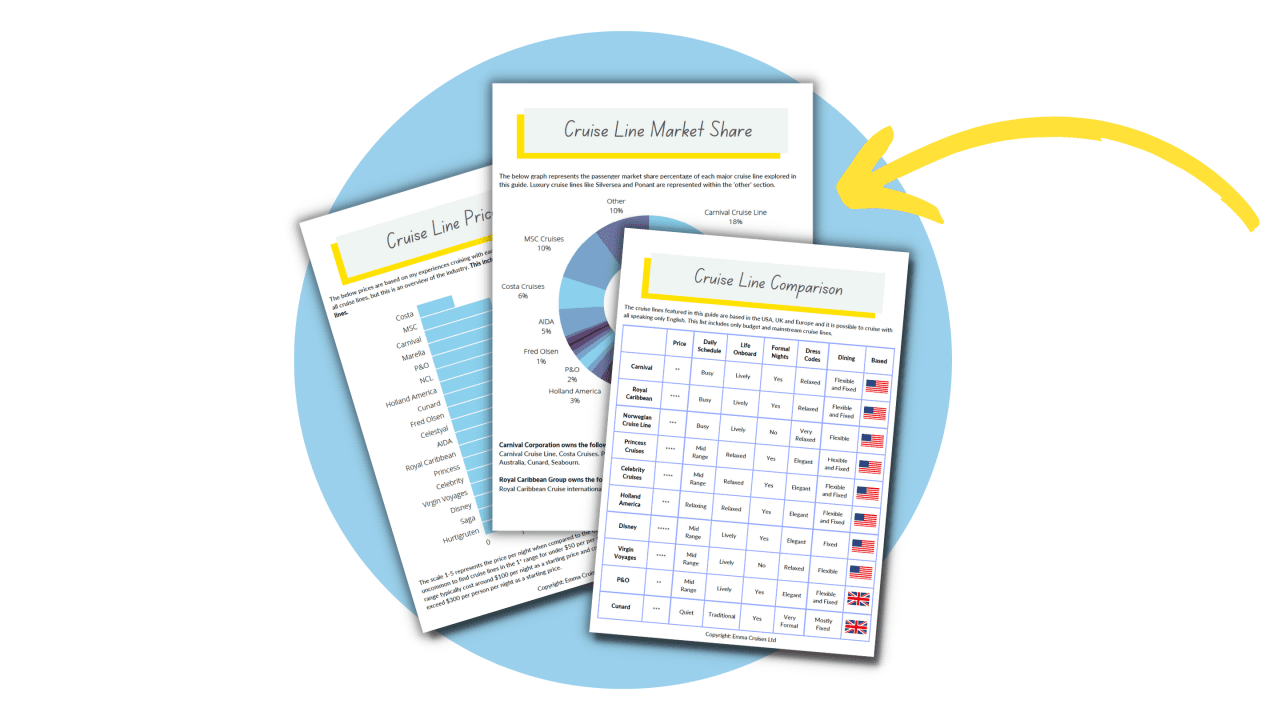
Free Insiders Cruise Line Guide
Ever wondered how the mainstream cruise lines compare? Cruise lines won’t tell you this, but I will.
This FREE guide shows you everything you need to know to find your perfect cruise line.
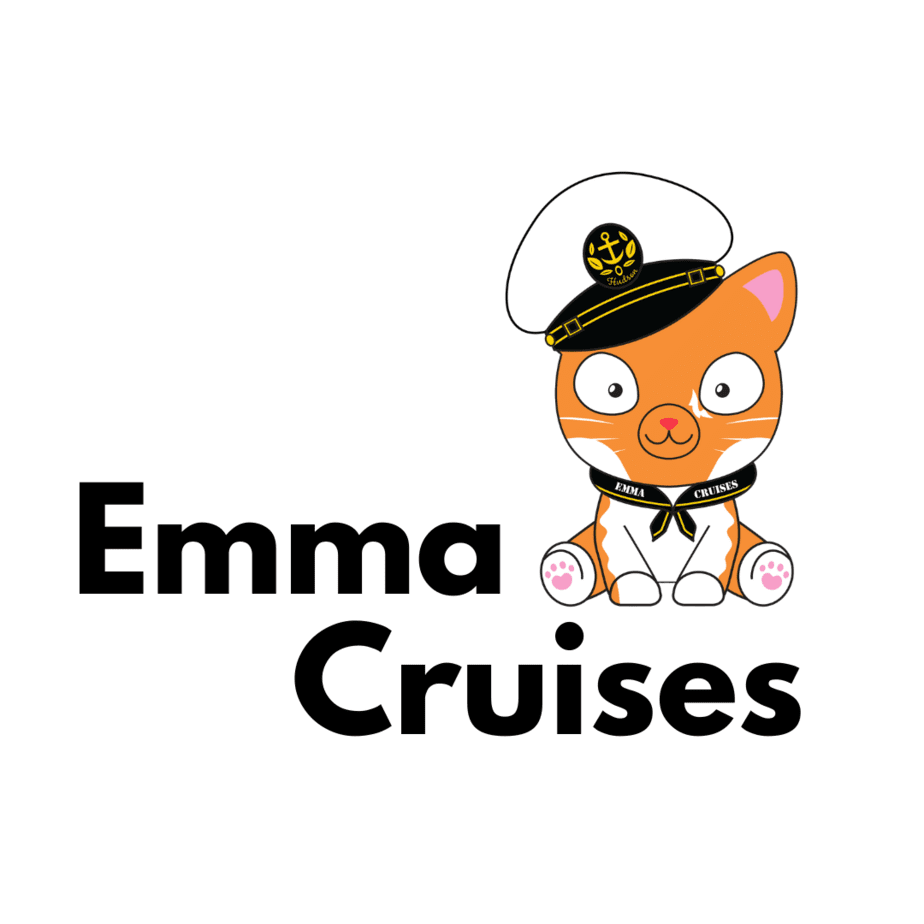
Ocean Liners, They Still Exist: Here’s Everything You Need to Know – Emma Cruises
Monday 2nd of November 2020
[…] 5 HUGE Differences Between Cruise Ships and Ocean Liners […]